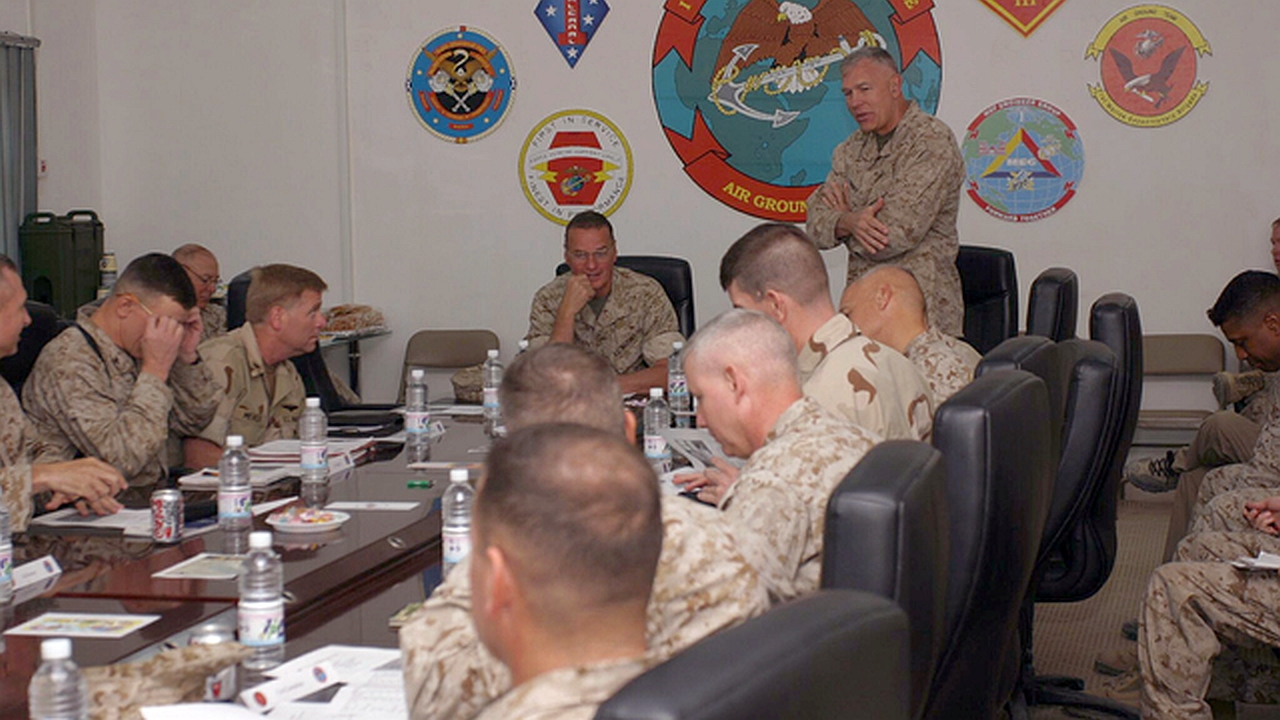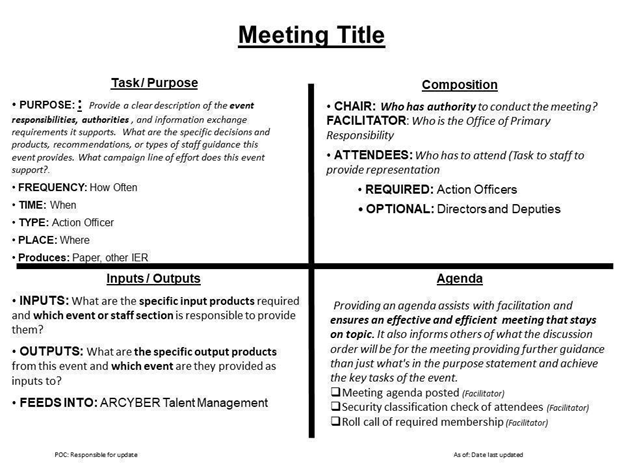
Organization Management Rhythm (part 6.1): Tools – 7-Minute Drill
This article is part 6.1 of a series of articles on Organization Management Rhythm.
This is by far the most important product an organization can produce. This single piece of paper tells what the meeting purpose is, the time, frequency, place, type of meeting, what it produces, who is over the meeting, who is responsible for/in charge of the meeting, who needs to be there, what goes into the meeting, the outputs and tasks from the meeting, what it feeds into, and finally the agenda. The military calls it a 7-Minute Drill because they have seven minutes to explain to the Chief of Staff why this meeting should occur1.
This one document starts the process for the analysis of meetings. How they support the decision cycle? This helps senior leaders to visualize the information flows from this meeting. Calendar rhythm events as color-coded nodes situated along planning horizons with input and output relationships as connections. How each meeting supports the critical path? It analyzes the touch points to the critical path and evaluates how the staff is engaged and distributed. It helps identify any potential meeting issues and possible courses of action to eliminate the issue.
The person responsible for the meeting will fill out a 7-Minute Drill. Proper meeting management begins with preparing an agenda for the meeting. Once approved, the agenda and any read-ahead should then be provided in advance to the members of the scheduled meeting. This information ensures an informed discussion on the topics resulting in more efficient and effective output.
It allows for independent questions or concerns to be brought up ahead of the meeting time, allowing the meeting team time to address the questions. This could actually cause the meeting to be cancelled or moved to allow for more information to be gathered. 7-Minute Drills help eliminate having meetings for the sake of having meetings, wasting staff time and resources, and often results in the failure to effectively and efficiently obtain the desired output.
Leaders should analyze meetings to:
- Identify and align meeting inputs and output.
- Identify duplicative meetings that can be combined.
- Sequence meetings to ensure the output aligns with the input of subsequent meetings.
- Synchronize meetings with the operations Organization Management Rhythm.
- Maximize allotted time.

Next part (part 6.2): Tools – 7-Minute Drill Rollup.
Acknowledgements: Thank you to Tomi Antill, Keith Davis, Elise Keith from Lucid Meetings, JFHQ-C Leadership, and Kendra Albright from Kent State University, without whose support this series would not have been possible.
Header image source: U.S. National Archives, Public Domain.
Reference:
- Findlay, M. (Ed.). (2019, September). Joint Headquarters Organization, Staff Integration, and Battle Rhythm. https://www.jcs.mil/Portals/36/Documents/Doctrine/fp/jtf_hq_org_fp.pdf. ↩






